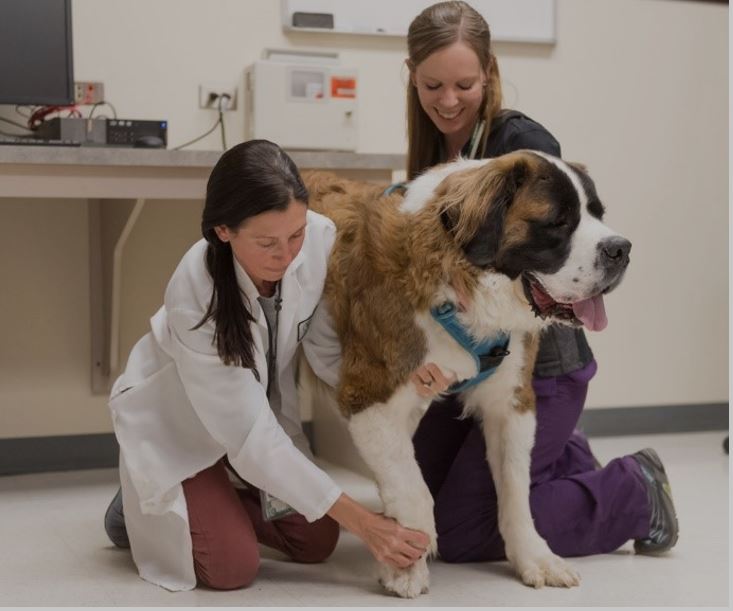
Epilepsy Natural Animal Model
Description:
Epilepsy is a chronic neurological condition characterized by unpredictable seizures, and it affects both humans and animals. Management of epilepsy is often challenging, especially with Dravet syndrome and Lennox-Gastaut syndrome, which both manifest as early-onset, treatment-resistant epilepsy in young children. Dravet syndrome is thought to affect about 1 in every 22,000-40,000 people (Connolly 2016), but Lennox-Gastaut syndrome is more common, accounting for 1-10% of all childhood epilepsies (Verottti et al. 2018). These conditions are similar to idiopathic epilepsy in canines, which is characterized by recurrent seizures without other abnormalities and may affect up to 5.7% of the pet dog population (McGrath et al. 2019).
Similarities in Humans:
Epileptic syndromes have many similarities between canine and human patients, including clinical presentation, treatments used, and resistance to drugs. Animals and humans experiencing seizures tend to present with similar clinical signs, including confusion, uncontrolled movements, or even loss of consciousness. Similarly, chronic seizure disorders are associated with long-term cognitive dysfunction and behavioral changes in both dogs and humans. The existing treatments available for the management of epileptic syndromes are also mirrored between species as many of the anti-epileptic drugs (AEDs) work to modulate the electrical impulses in the brain to prevent or lessen the severity of seizures. Unfortunately, in both humans and dogs, anti-epileptic drugs are often not sufficient to completely control seizures and can have undesirable side-effects, and a different treatment plan is required.
Differences in Humans:
Canine epileptic disorders tend to manifest between the ages of 1 and 5, while Dravet and Lennox-Gastaut syndromes are common in childhood, with the onset being under one year of age and between the ages of 2 and 3, respectively. Dravet syndrome and Lennox-Gastaut syndrome have also both been strongly associated with mutations in the brain, while idiopathic epilepsy in dogs has no known cause but is presumed to have a genetic basis.
Disease Etiology:
Dravet syndrome and Lennox-Gastaut syndrome have both been associated with mutations affecting the brain, including mutations in genes encoding for ion channels that regulate electric impulses (Connolly 2016; Verotti et al. 2018). While canine idiopathic epilepsy is not yet associated with defined mutations, there are breed-specific predispositions that suggest a genetic basis for the condition (Hülsmeyer et al. 2015).
Clinical Presentation:
The clinical presentation varies slightly between each syndrome. Dravet syndrome typically first presents with hemiclonic seizures (rhythmic jerking affecting one side of the body) and progresses to focal (originated from one part of the brain and affecting part of the body), myoclonic (contractions of muscle groups), or tonic-clonic (stiffening of the body followed by jerking movements) seizures. Lennox-Gastaut syndrome is characterized by tonic seizures (stiffening of the body), atypical absences (when a patient is only somewhat responsive), and drop attacks (complete loss of consciousness). Canine idiopathic epilepsy is typically marked by focal or generalized seizures. Human and canine patients may experience behavioral changes or cognitive dysfunction (resulting in intellectual disabilities in humans) after onset of seizure disorders.
Treatment:
Canine epileptic disorders are often treated with phenobarbital or potassium bromide, which stabilize neurons and regulate excitatory output in the brain. Dravet syndrome and Lennox-Gastaut syndrome are often treated using valproic acid or clobazam, but other drugs may be prescribed for treatment of the condition. Even with treatment, many people and dogs still experience seizures that are poorly controlled by medication, so recent studies have sought to elucidate the effect that the addition of CBD to a standard treatment regimen may have on a patient’s seizures (Devinsky et al. 2017; Devinsy et al. 2018; McGrath et al. 2019).
Recent Publications:
Devinsky O, Cross JH, Laux L, Marsh E, Miller I, Nabbout R, Scheffer IE, Thiele EA, Wright S. Trial of cannabidiol for drug-resistant seizures in the Dravet syndrome. New England Journal of Medicine. 2017 May 25;376(21):2011-20.
Devinsky O, Patel AD, Cross JH, Villanueva V, Wirrell EC, Privitera M, Greenwood SM, Roberts C, Checketts D, VanLandingham KE, Zuberi SM. Effect of cannabidiol on drop seizures in the Lennox–Gastaut syndrome. New England Journal of Medicine. 2018 May 17;378(20):1888-97.
McGrath S, Bartner LR, Rao S, Packer RA, Gustafson DL. Randomized blinded controlled clinical trial to assess the effect of oral cannabidiol administration in addition to conventional antiepileptic treatment on seizure frequency in dogs with intractable idiopathic epilepsy. Journal of the American Veterinary Medical Association. 2019 Jun 1;254(11):1301-8.
Thiele EA, Marsh ED, French JA, Mazurkiewicz-Beldzinska M, Benbadis SR, Joshi C, Lyons PD, Taylor A, Roberts C, Sommerville K, Gunning B. Cannabidiol in patients with seizures associated with Lennox-Gastaut syndrome (GWPCARE4): a randomised, double-blind, placebo-controlled phase 3 trial. The Lancet. 2018 Mar 17;391(10125):1085-96.
Verrotti A, Striano P, Iapadre G, Zagaroli L, Bonanni P, Coppola G, Elia M, Mecarelli O, Franzoni E, De Liso P, Vigevano F. The pharmacological management of Lennox-Gastaut syndrome and critical literature review. Seizure. 2018 Dec 1;63:17-25
References
Bukiya AN, editor. Recent Advances in Cannabinoid Physiology and Pathology. Springer; 2019 Jul 22.
Connolly MB. Dravet syndrome: diagnosis and long-term course. Canadian Journal of Neurological Sciences. 2016 Jun;43(S3):S3-8.
Hülsmeyer VI, Fischer A, Mandigers PJ, DeRisio L, Berendt M, Rusbridge C, Bhatti SF, Pakozdy A, Patterson EE, Platt S, Packer RM. International Veterinary Epilepsy Task Force’s current understanding of idiopathic epilepsy of genetic or suspected genetic origin in purebred dogs. BMC veterinary research. 2015 Dec 1;11(1):175.
Lewis CB, Adams N. Phenobarbital. [Updated 2020 Feb 14]. In: StatPearls [Internet]. Treasure Island (FL): StatPearls Publishing; 2020 Jan-. Available from: https://www.ncbi.nlm.nih.gov/books/NBK532277/
McGrath S, Bartner LR, Rao S, Packer RA, Gustafson DL. Randomized blinded controlled clinical trial to assess the effect of oral cannabidiol administration in addition to conventional antiepileptic treatment on seizure frequency in dogs with intractable idiopathic epilepsy. Journal of the American Veterinary Medical Association. 2019 Jun 1;254(11):1301-8.
Trevail R. Considering quality of life in dogs with epilepsy … [Internet]. Veterinary Practice. 2019 [cited 2020Jun16]. Available from: https://veterinary-practice.com/article/considering-quality-of-life-in-dogs-with-epilepsy
Verrotti A, Striano P, Iapadre G, Zagaroli L, Bonanni P, Coppola G, Elia M, Mecarelli O, Franzoni E, De Liso P, Vigevano F. The pharmacological management of Lennox-Gastaut syndrome and critical literature review. Seizure. 2018 Dec 1;63:17-25.



